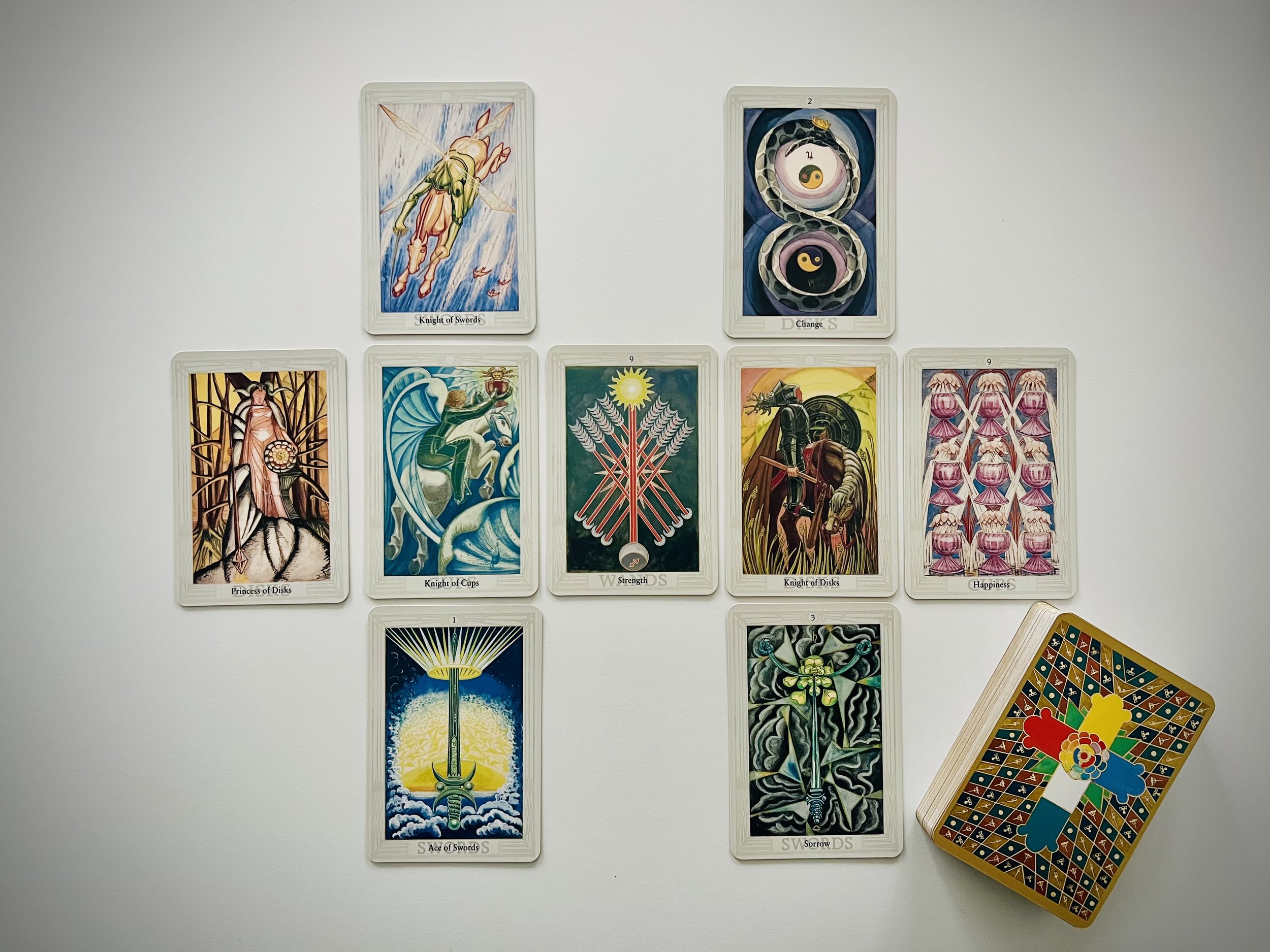Love & Connection: A Relationship Spread
The card-reading community is always drawn to a good spread. As a studious teenager, I relied heavily on them. Over time, I found myself preferring simplicity: three cards can address almost any question, six cards bring out contrasts, and nine cards add depth. A straightforward 3-6-9 progression that’s easy to remember and covers most needs. That said, there’s no harm in using pre-defined spreads. The key consideration is flexibility: do the cards interact, building on one another to form a coherent answer? I find that one card rigidly bound to a fixed position rarely says much on its own.
This approach applies equally to relationship readings. We need an interplay—a dynamic view—to capture the relationship’s current state. Most of the time, three cards are enough for this. But if you’re seeking greater depth, I recommend a well-tested spread I’ve used for years, offering contrasting perspectives between two partners. Like the prediction method, this spread comes from Keys to the Arcana by Maja Mandić.
The mechanics are straightforward. Start by selecting two significators: one for the querent and one for their partner. Stick to the hair color rule for simplicity: Cups/Hearts for blondes, Clubs/Batons for brunettes, Diamonds/Coins for redheads or colored hair, and Spades/Swords for dark hair. If this doesn’t fit the context, character traits can also work. Leave space for an additional card between the significators. Then, lay six cards counterclockwise, beginning at the top of the querent’s significator and finishing at the top of the partner’s. Place the seventh card between the two significators, completing the spread. In the end, your layout should look like this:
Cards one, two, and three reveal the querent’s perspective on their partner, while cards four, five, and six give us insight into the partner’s view of the querent. The card in the seventh position, the “bonding factor,” sheds light on the mutual context—what underpins their attitudes and thoughts toward each other.
Now, let’s examine an example reading with Thoth Tarot to see how this spread works in practice. A client of mine met a man some time ago, sensing some level of interest from him. He wanted to know just how deep that interest goes and whether a relationship could be possible. Adding a layer of complexity, the client also noted that this man is already in a relationship.
Thoth Tarot by Aleister Crowley and Frieda Harris, US Games and AGM, 2023.
Right off the bat, we see that the sexual tension is strong between the two, with the 9 of Wands (Strength) connecting them. However, how this plays out for each of them is a different story. If we look at the querent, we see that at first, he is all in—rushing forward with stark determination, seeing potential in the pregnant Princess of Disks. However, as soon as he hits his target, he is very likely to make a cut (Ace of Swords). On the other hand, the man he is interested in seems unhappy with his current predicament (3 of Swords or “Sorrow”) and appears ready to make a change of heart, intending to try his happiness with the querent (9 of Cups to 2 of Disks). Thus, there is not only interest from the man in question, but he seems willing to go even further than my client is prepared for. What might begin and end as a sexual thrill for my client may hold deeper implications for the man at hand.
As you can see, having three cards for each perspective allows the dynamics to emerge in a contrasting manner, without the rigidity of set positions à la “This card stands for this.” Even if a spread includes set positions, in my opinion, they should be used only instrumentally and never overpower what is plainly evident. Keeping your eyes open for flow and interplay between the cards is what makes a reading cohesive.
References
Mandic, M. (1994) Ključevi Arkana: Praktični priručnik za Kroulijev Tartot. Beograd: IP Esotheria.


